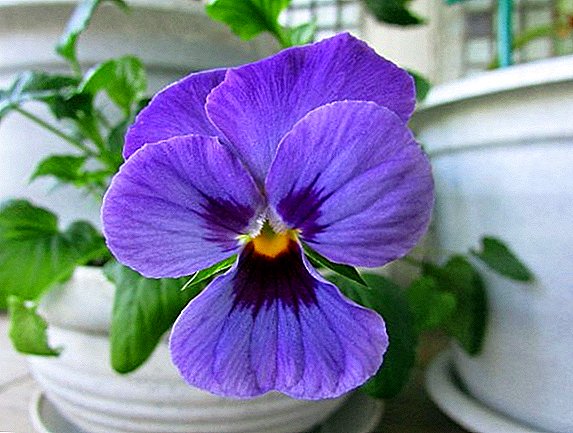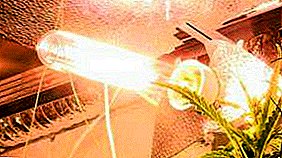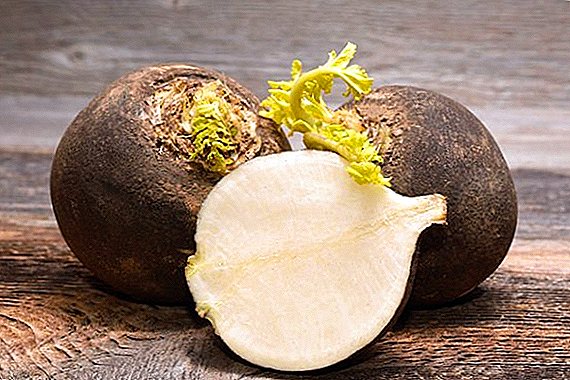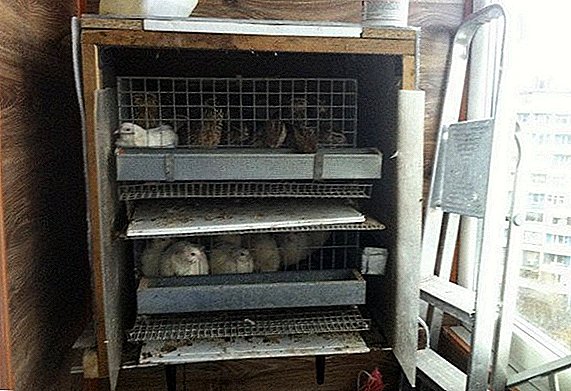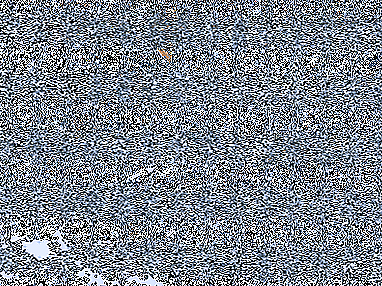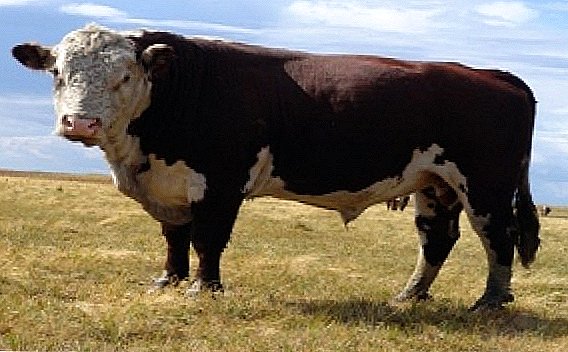
Breeds of cows are many, and it is quite difficult to find among them suitable for all characteristics for you. Solving such a complex task is slowly, having read in detail the description of the most popular breeds.
It is the category of the most popular that includes cows of the meat type of the Kazakh white-headed breed. They are known on the territory of the former USSR for a long time, and therefore managed to win a good reputation.
The breed has its own characteristics not only in the external exterior, but also in the characteristics of keeping and breeding, it can really surprise with the characteristics of productivity.
But, in order not to be scattered with common phrases, let us turn to a detailed description of these cows.
What is so remarkable breed of Kazakh white-headed cows?
Familiarity with the breed should start from a short history of its origin. It was bred by Soviet breeders. Such famous breeds of cows as Hereford cows and representatives of local cattle - Kazakh and Kalmyk breeds were used as genetic material.
From the first breed of Kazakh white-headed breeders sought to convey high rates of productivity of meat and precocity, and from the rest - their endurance, adaptability to the content in open areas and a strong body constitution.
The result really exceeded expectations, since in its performance the new breed is far ahead of its genetic relatives.
What are the main offspring of the breed described today?
Despite the fact that when describing Kazakh white-headed cows most often focus on their meat productivity, in fact, there is also a combined type of this breed.
But first of all, in the course of improving the productive qualities of cows, the main type of meat directionThe formation of which occurred as follows:

- for a very long period of time, cattle were kept on open steppe pastures; they were only allowed to enter the premises for the winter;
- during the winter period in the premises, the cattle fed exclusively on roughage, using silage and various concentrates;
- rearing was carried out by the suckling method (that is, after calving, the cows were not distributed, the main emphasis was placed on the growth of calves);
- breeding exclusively on meat characteristics.
In order to develop a second type of breed - meat and milk, the selection of animals was carried out not only for meat features, but also for milkiness (special emphasis was placed on the fat content of milk).
Some time after calving, the calves were taken away from the mother and drank from the bottles. To make the cows better distributed, they were given a large amount of not only concentrates, but also succulent feeds as feed.
A similar description of the method of breeding a certain type of performance of cows is induced by us not only to acquaint you with the history of the breed.
We recommend that you use all the above features of keeping and feeding animals in your own farms, which will allow you to receive even more products from pets.
Description of the features of the exterior of the Kazakh white-headed cattle

Outwardly, it is not difficult to recognize these cows, especially since the hint lies in the very name of the breed. About these animals we can say that their color is represented in almost all shades of red. But here the head of a cow, its basement, as well as the lower part of the belly and legs have a white color. White is also their tail brush.
The physique of Kazakh white-headed cows has a pronounced meat type, even if the cow is more likely to be of the meat and dairy type.
Due to the intense development of muscles, the body is barrel-shaped. The dewlap in animals is very dense, therefore it comes forward strongly (this is especially characteristic of bulls).
From the Kalmyk and Kazakh breeds of cattle this breed was transferred short legs. However, this feature in no case can not be considered a disadvantage, since on high legs it is much more difficult for animals to bear their impressive weight.
Moreover, the muscles on the legs are also very well developed, which makes them strong and stable.
Special attention should be paid to the skin of this breed. They have it very elastic, which allows you to easily gain and lose weight several times a year. Subcutaneous tissue is very well developed, thanks to it there is a very intensive accumulation of adipose tissue.
In particular, with an average carcass weight of an already killed animal is 295 kilograms, the amount of internal fat is 35.6 kilograms. But, to carry the cold of this breed helps not only the accumulated fat, but also the features of their unique wool.
In summer, it is the same as that of most dairy cows: very short, smooth, shiny. But by the winter, cows acquire a very long and thick pile, which sometimes can even curl.
Like beef cattle, Kazakh white-headed cows have very large measurements:
- in the withers, the height of animals can range from 125 to 130 centimeters, which will significantly depend on their gender;
- chest depth is 68-70 centimeters;
- measurements of the width of the breast behind the shoulder blades are 43-45 centimeters;
- total chest girth is 187-190 centimeters;
- the length of the trunk also depends on the sex of the animal and can vary from 150 to 155 centimeters;
- metacarpus in girth reach 18-20 centimeters.
It is also interesting to read about fattening cattle.
The virtues that the breed of Kazakh white-headed cows can boast
There are a lot of advantages of breeding and maintenance of these cows. No wonder they are very widely used in farmswhere it is very difficult to see for each individual and where the possibility of keeping animals on grazing grounds is considered a big advantage.
The most important advantage of the content is the ability to use of the extensive type of fatteningwhich implies absolutely no feed costs.
The only thing that needs to be done is to provide the animals with large areas for grazing, with a good forage base. For this, Kazakh white-headed cows have all the necessary characteristics, which are disclosed in the following breed virtues:

- Undemanding animals to feed.
Having in its genetic code the heredity of wild nomadic cows, this breed is accustomed to eat the food that can be found independently and literally under their feet.
The digestive system of Kazakh white-headed cows perfectly processes and assimilates the coarsest grass, allowing animals to quickly gain live weight.
This advantage greatly simplifies the maintenance of the breed, because even in winter, it is not necessary to puzzle over what to feed the animals.
- Good tolerance to both high and low temperatures.
Very rough skin and the ability to grow "winter" hairline contributes to a good heat exchange of animals.
Also, for the winter they usually accumulate a large amount of fatty tissues, which allow them to maintain a stable body temperature.
By the summer, their weight is usually reduced, the wool becomes short, which makes it easier to endure high temperatures, lack of moisture.
- Very intensive growth of young animals.
Grown-up chicks as young as 8 months weigh at least 210 kilograms, while the mass of bulls easily reaches 250 kilograms.
By the age of one and a half years (and often earlier), animals easily reach a weight of 450-470 kilograms. This is greatly facilitated by prolonged feeding with mother's milk, which provides the body of calves with very important trace elements, as well as parallel consumption of regular food.
The average daily gain of the breed is from 1 to 1.5 kilograms, while the costs are only 6 feed units. Much more intensively gain weight oxen.
- High quality characteristics of meat of cows.
The beef received from the Kazakh white-headed breed differs in very high juiciness. Also, these animals are characterized by the deposition of fat, not only under the skin, but also between the muscles of the whole body.
Due to this, the meat cut gets a marble pattern, for which beef is proudly called marble.
Also, thanks to between the muscle fat layer, the meat has a higher fat content and good taste, and the animal in the winter does not freeze and does not die from lack of food.
- Acclimatization of animals of the described breed goes very well.
This is due to the fact that the habitual climatic conditions of existence for these cows is the territory of Kazakhstan, where in the daytime the air temperature can rise above + 50ºС, and at night, even in summer, drop to minus indicators.
Therefore, animals can adapt to both the northern and southern regions.
- The ability to use skins for the production of leather of very high quality.
The representatives of the breed skin is very massive, with an average thickness of the double fold can be 11.5 millimeters.
This allows you to apply to it the most intensive processing, to produce even exclusive products that have high value.

What features of the breed can be attributed to its disadvantages?
According to estimates of experienced breeders, the body of the Kazakh white-headed cow is more likely to be considered narrow, which does not allow the breed to fully reveal its potential.
Of course, with these indicators these cows refers to one of the best breeds, but undoubtedly, with a different skeleton shape, the muscularity of the body would be greater.
The disadvantages of many include excessive care of cows for their offspring.
Immediately after calving, a cow may even show aggressiveness towards a person, therefore it is recommended not to intervene in this process at all if there is no real need for it.
Parse the characteristics of the productivity of the breed

Without any additional effort, these animals in a very short period of time. able to recruit just record weight. In particular, the weight of adult females can range from 540 to 580 kilograms, although individual animals can weigh as many as 800.
But the record indicators of the mass of bulls of the Kazakh white-headed breed is 950 kilograms. But, if at an early age a bull is castrated, then oxen are able to gain even greater weight indicators - up to 1100 kilograms.
At the slaughter output, the amount of meat products produced is usually in the range of 53-55% of the total weight of the entire animal carcass.
With a very good fattening, this figure can rise even up to 65%, but only in this case the meat will be fatter. The skeleton of animals, although very durable, but narrow and light. Its share in the total mass of carcasses averages 13.9%, which is a very low figure.
Breed reproduction: the most important indicators
The puberty of both cows and bulls of the described breed occurs rather early, but it can last over 10 years. Due to this factor, a herd of even two individuals has the ability to grow very quickly, giving birth to more and more new generations.
Usually, after the first calving, the following occurs every year. The fecundity of the breed is not less than 90-95%.
A very important advantage of Kazakh white-headed cows is their well developed maternal instinct, thanks to which the survival rate of newborn calves is almost equal to 100%, although for a person it does not always turn out for the better.
But it doesn’t matter where the calving takes place, indoors or outdoors, the animals will still provide the calf with the necessary care without outside intervention.
Newborns are born very large - on average, from 27 to 30 kilograms (depending on gender). But, due to the large size of the body, the cow very firmly tolerates the process of calving, very rarely complications occur.
Milk productivity of Kazakh white-headed cows

The ability to give milk is an important factor for any breed of cow. And, although the described cattle is meat-producing in its performance, milkiness also refers to one of its important advantages (especially among the representatives of the combined type).
If you generally evaluate the milk productivity of Kazakh white-headed cows, it is very low. The average annual milk yield is only 1000-1500 kilograms of milk.
From cows of meat and dairy type in some farms for one lactation it was possible to receive about 6000 kilograms of milk. However, the advantage of the breed are taste and fat content of this useful product. B
Due to grazing in the open space and feeding of animals with exclusively plant food, their milk turns out to be extremely useful and tastier than other dairy breeds. The indicator of fat content is also quite high, and it is equal to 2.8-4.8%.
Of course, the fat content of milk has the ability to fluctuate depending on the nutrition and periods of calving, but in general it still remains at a high level.


